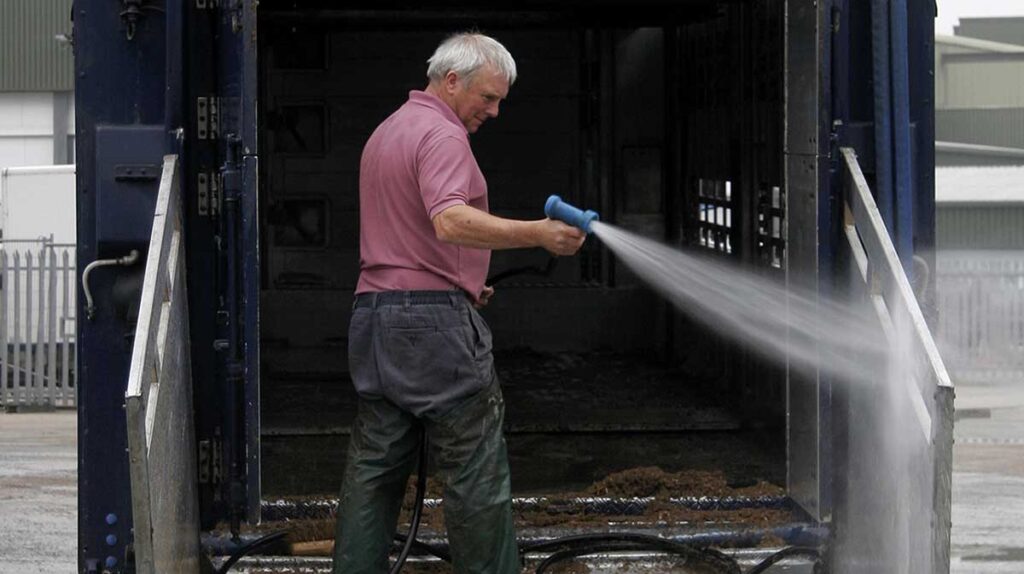The NPA has set out five points to help the pig sector tackle the increasing prevalence of swine dysentery, which was a worrying trend during 2024.
During a frank discussion at the NPA’s latest Pig Industry Group (PIG) meeting in December, veterinary and producer members stressed that the industry, collectively, could and should be doing much more to prevent its spread.
In response, the NPA has put together five key points that apply across the supply chain:
- #MuckFreeTrucks: Hauliers, abattoirs and producers must ensure vehicles are thoroughly cleaned and disinfected immediately after carrying pigs. Producers on PIG pointed out that standards are simply not up to scratch at some pork plants, with inadequate washing facilities and long queues. This must be addressed.
- On-farm vehicle protocols: Pig producers must have clear protocols in place about where vehicles – including suppliers, delivery vehicles, builders and contractors – can and cannot go on their farms and try to ensure access is limited as possible. Too often, vehicles are able to access areas that enable them to spread the disease from one farm to another. Strategically placed loading ramps are one example of how producers can prevent the need for vehicles to go past a certain point.
- People movements: Similarly, strict protocols must also be in place governing the movement of staff and visitors, again including the likes of suppliers, delivery vehicles, builders and contractors, between different areas of the farm. This includes the provision of adequate PPE and footbaths, showering-on and -off facilities and the sectioning of different parts of the farm with strict rules in place about movement between them. Vet Gemma Thwaites highlighted how easily the disease is spread via very small quantities of pig faeces.
- Spotting symptoms: Be vigilant for symptoms of swine dysentery and report any suspicious signs, which include diarrhoea and weight loss, immediately to your vet. Gemma noted that recent strains have not been the typical virulent ones – instead, recent cases have had less obvious symptoms. As a result, the disease has sometimes taken a long time to be suspected and confirmed.
- Significant Diseases Charter: Vets and producers must report all cases to the Significant Diseases Charter, which is a Red Tractor requirement for assured producers but should be adhered to by non-assured as well. This ensures that others in the industry, who might be visiting farmers, contractors or wider industry, are fully aware of the local disease situation. Michael Putt, PIG’s Pig Veterinary Society representative, noted a disparity between the number of official swine dysentery confirmations by APHA and the number of cases being reported on the charter.
More information
- The NPA’s swine dysentery pages, including regular updates on outbreaks.
- Specific guidance on swine dysentery from AHDB
- Read more about and sign up to the Significant Diseases Charter
- AHDB’s webpage on the #MuckFreeTruck campaign contains lots of useful information, including biosecurity tips
- An APHA document presenting lots of useful information about the disease, including symtoms
- Pig World article: How to reduce the risk and spread of swine dysentery
- Pig World article: How to minimise the growing risk of a swine dysentery outbreak




